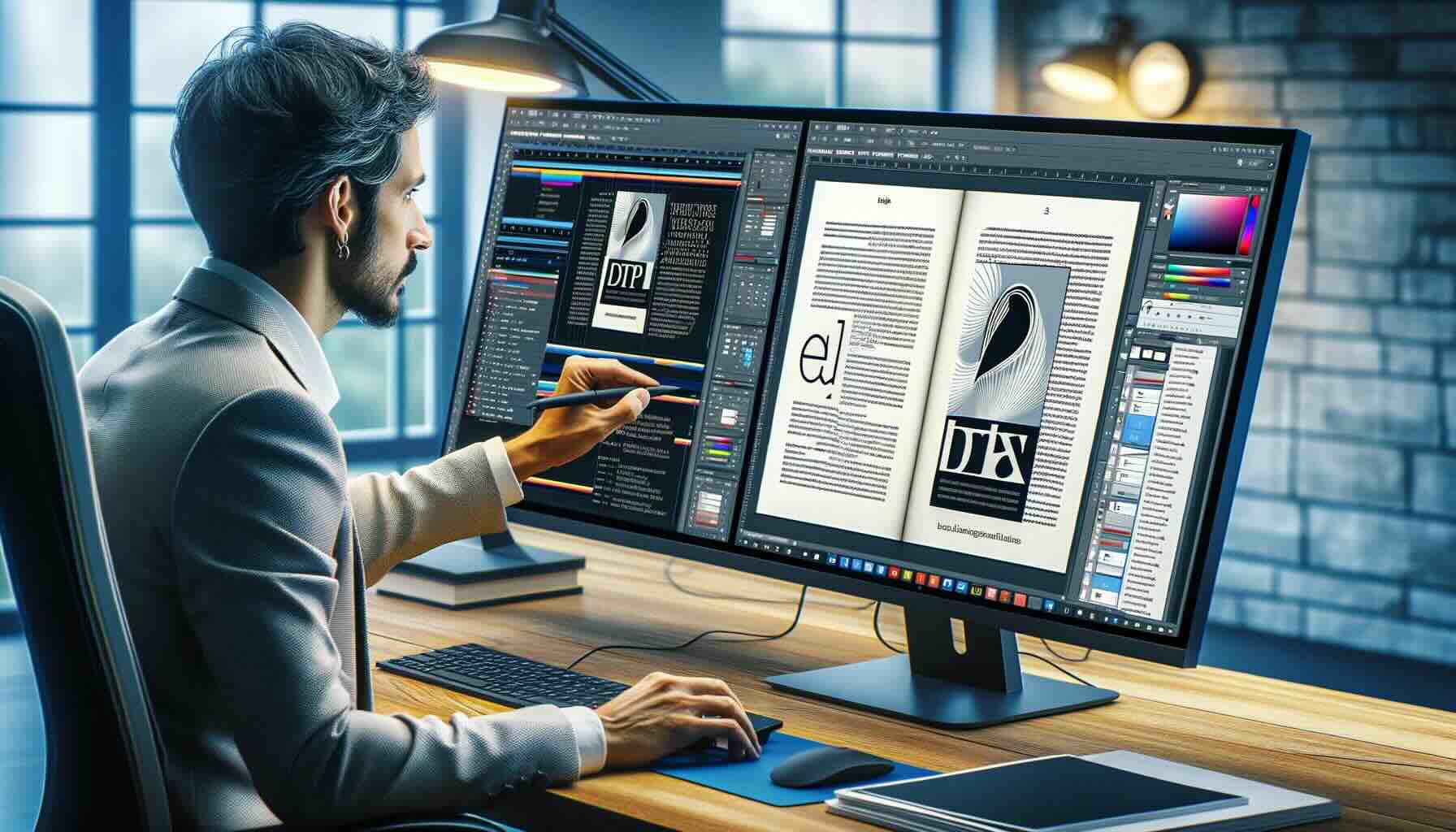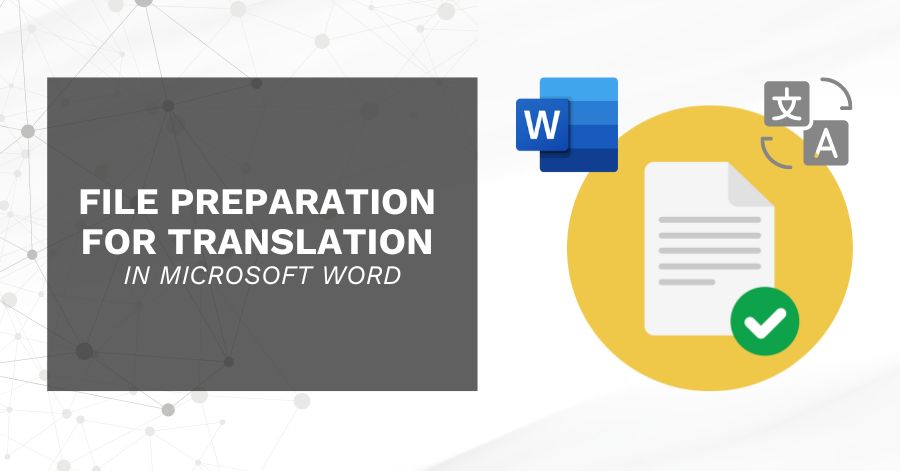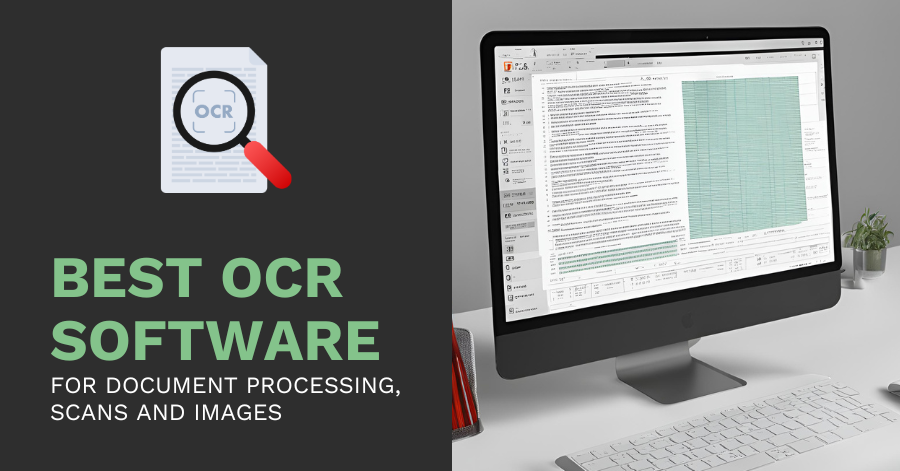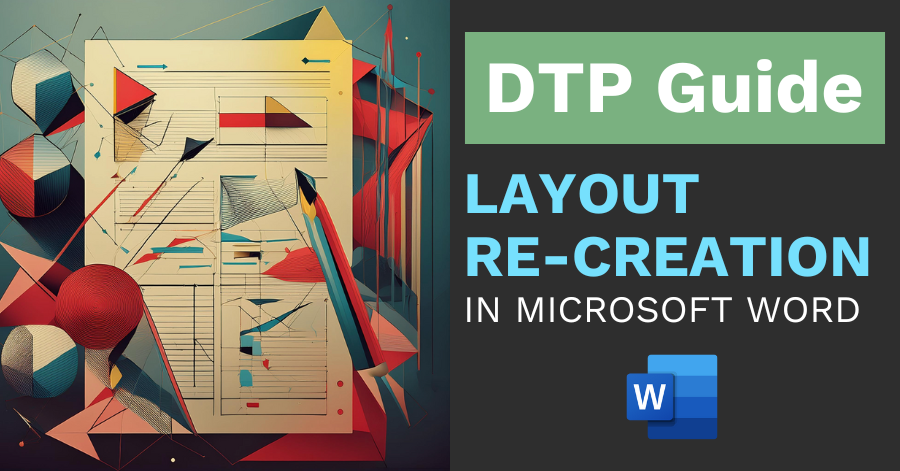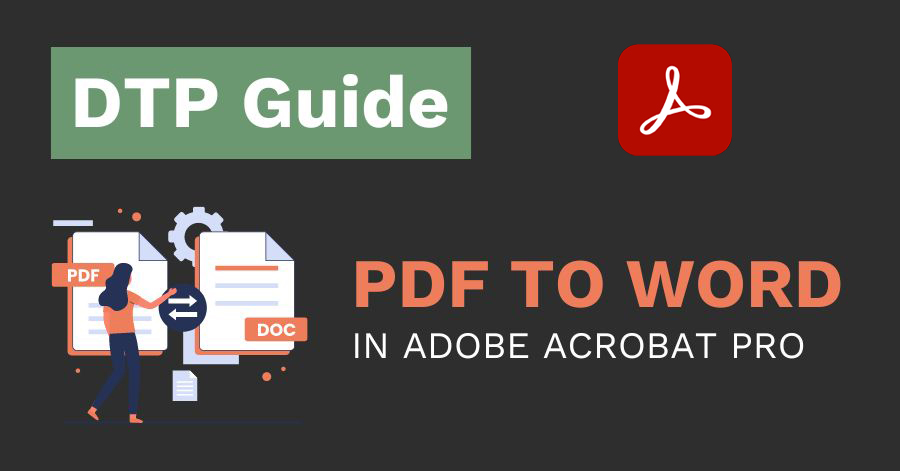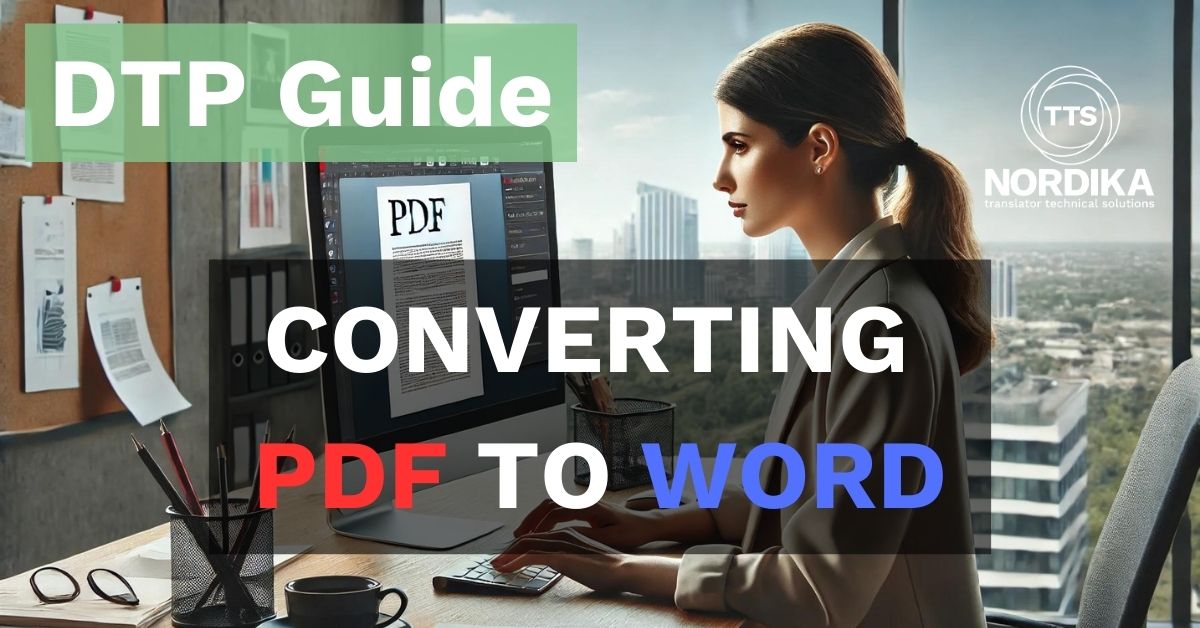Imagine a world where translations are mere text swaps, devoid of any design considerations. You’d find brochures with mismatched layouts, reports where text spills out of margins, and manuals where images and text are in disarray. This is the landscape without Multilingual Desktop Publishing - chaotic and confusing.
In every translation project, Multilingual DTP plays a crucial role. It ensures that the final translated document resonates with the target audience not just in language, but also in design and cultural appropriateness. From preparing files for translation to fine-tuning the post-translated document, Multilingual DTP is the bridge that connects language and design.
Let’s explore how each stage of Multilingual DTP adds value and elegance to translation projects, transforming them from mere words to impactful, culturally attuned communication tools.
Pre-Translation DTP Stage:
Building The Foundation
At the heart of every successful translation project lies a well-executed pre-translation DTP stage. Here, DTP specialists diligently prepare documents to guarantee that all text is not only translatable but also optimally aligned with existing Translation Memories. This proactive approach is key to maximizing text matches, thus enhancing consistency and reducing turnaround time. The goal is to create a seamless pathway for the translation to flow smoothly, ensuring every word is accurately captured and aligned with previous translations for coherence and quality.
These are some of the most important steps in the pre-translation DTP stage:
File Preparation:
This crucial step involves meticulously refining the document by removing all extraneous elements that could cause segmentation issues and reformatting it to ensure compatibility with translation processes. This careful preparation is essential for optimizing the results of Machine Translation or Computer Assisted Translations, preventing issues during and after the translation.
Example:
For instance, imagine a complex brochure designed in InDesign, laden with intricate graphics and text boxes. Before translation, DTP specialists would methodically remove any hidden layers or redundant elements that could cause complications. They would also reformat the document, ensuring that the text flows correctly and is segmented appropriately for seamless translation into a target language like French. This streamlining not only enhances the efficiency of the translation process but also ensures that the final French version of the brochure maintains the design's integrity and readability.
Text Extraction:
Here, specialists extract text from non-editable formats, making it accessible for translators. This process is crucial for maintaining the document’s original design and structure.
Example:
Imagine a PDF with embedded text in images. DTP experts would use OCR technology to extract this text, preparing it for translation while preserving the original layout and design elements of the PDF.
Source File Recreation:
This step addresses the challenge when the original source file is missing. DTP experts are equipped to convert or recreate files, such as PDFs, into formats compatible with Computer-Assisted Translation (CAT) tools.
Example:
A client needs a PDF document translated but lacks the original InDesign file. The DTP team steps in to convert the PDF into an editable Word or InDesign format. They meticulously recreate the layout to mirror the original as closely as possible. In some cases, they might even simplify the layout to better meet the client's specific requirements, ensuring the file is not only translation-ready but also tailored to the client's needs.
Post-Translation DTP Stage:
Making translations shine
Once the translation is complete, we enter the vital realm of post-translation DTP, where the true artistry of Multilingual Desktop Publishing unfolds. This stage is all about refinement and precision. It's where the translated text is seamlessly woven into the fabric of the original design, ensuring that every word not only communicates the intended message but also harmoniously fits within the aesthetic and cultural framework of the target audience.
Layout Adjustment:
Also known as the "Multilingual DTP" stage. Post-translation, documents will often require layout adjustments to accommodate text expansion or contraction in the new language.
Example:
An English manual translated into German might have longer text. DTP experts adjust the layout, resizing and repositioning text boxes to ensure the design remains clean and readable.
Font and Style Adjustments:
This involves selecting fonts and styles that not only match the new language’s typographic norms but also retain the document's original tone and style.
Example:
Translating an English corporate report to Japanese might involve changing the font to support Kanji characters, ensuring the new font reflects the report's formal tone.
Image and Graphic Localization:
This step is about integrating translated text into images and graphics seamlessly, maintaining the integrity and impact of the original design.
Example:
An infographic with text in English is translated to Spanish. DTP experts then adjust the Spanish text within the graphics, ensuring it fits perfectly and the design remains visually engaging.
Manual Typesetting:
This crucial phase involves the meticulous integration of translated text into the DTP software. The process is hands-on and detail-oriented, where DTP experts manually copy and paste the translations (often received in Word format) into the DTP software. While doing so, they make real-time adjustments to the layout, ensuring the text fits perfectly within the design framework.
Example:
Imagine a brochure originally in English, translated into Italian. The Italian text is received in a Word document. The DTP specialist then manually transfers this text into the brochure's InDesign file. Given the differences in language structure and length, the specialist carefully adjusts the text boxes, font sizes, and spacing. This ensures that the Italian version not only reads accurately but also retains the visual impact and flow of the original English brochure.
Quality Assurance Stage:
Pursuing Perfection
Quality Assurance in Multilingual DTP goes beyond simple proofreading. It's a meticulous process where experts ensure that the final product is not only free from errors but also aligns perfectly with the design and layout of the original document, and is culturally appropriate for the target audience.
Layout and Design Consistency:
This involves scrutinizing every element of the layout to ensure it mirrors the original design. DTP specialists check for consistent use of fonts, alignment of text and images, and the overall spatial balance of each page.
Example:
In a multilingual magazine, the QA process would involve comparing each page of the translated version against the original to ensure that the images are correctly aligned, the text flows as intended, and the overall aesthetic remains consistent. This includes verifying that elements like headings, captions, and pull quotes maintain their stylistic and positional integrity.
Typography and Readability:
The focus here is to ensure that the chosen fonts and styles are legible and appropriate for the target language. This includes checking for any issues like overlapping text, improper line breaks, or font rendering issues.
Example:
For a brochure translated into Thai, the QA team would ensure that the Thai script is rendered correctly in the selected font. They'd check for clarity and readability, ensuring that the font size and line spacing make the text easily readable.
Cultural Appropriateness and Localization:
This step ensures that all the elements in the document are culturally appropriate for the target audience. This includes checking the use of colors, symbols, and imagery to ensure they are culturally sensitive and relevant.
Example:
If a product catalog is being translated for the Middle Eastern market, the QA process would include verifying that images, color schemes, and symbols are appropriate and do not unintentionally convey offensive or culturally insensitive messages.
Final Proofing and Validation:
The final stage of QA is a comprehensive review to catch any overlooked errors and validate that the document meets all quality standards.
Example:
A corporate report translated into multiple languages would undergo a final proofing where a team of DTP experts and linguists review the document in its entirety, ensuring that every aspect, from language accuracy to design alignment, is flawless.
Quality Assurance in Multilingual DTP is an intricate process that combines attention to detail with an understanding of design principles and cultural nuances. It's the final, critical step that ensures the translated document is not just a textual translation, but a fully realized adaptation that respects and reflects the original's intent, style, and impact.
Tools of the Trade:
The DTP Expert’s Arsenal
Multilingual DTP relies on a variety of sophisticated tools and software, each playing a crucial role in different stages of the process.
- Adobe Creative Suite: InDesign, Photoshop, Illustrator, and Acrobat DC are staples for creating and editing complex documents and images.
- OCR Software: Tools like ABBYY FineReader aid in extracting text from non-editable formats, a critical step in pre-translation preparation.
- Microsoft Office Suite: Word, PowerPoint, and Excel are essential for handling a wide range of document types and formats.
- Other DTP Software: Specialized software like Adobe FrameMaker and Affinity Publisher are used for intricate layout designs and typesetting.
- E-Learning Tools: Articulate 360 (Storyline 360, Rise 360) is used for multimedia and E-learning projects, ensuring interactive content is accurately localized.
These tools enable DTP experts to work with precision and creativity, ensuring that every project meets the highest standards of quality and design.
Final Thoughts
As we conclude this journey through the world of Multilingual Desktop Publishing, we hope you've gained a deeper appreciation for the vital role it plays in professional translations. From the meticulous groundwork of pre-translation DTP to the artistic finesse of post-translation refinement, Multilingual DTP transforms mere words into impactful, culturally attuned communication tools.
It's the bridge that connects language and design, ensuring that your translated documents not only speak the right words but also convey them with elegance and cultural sensitivity. If you're ready to elevate your translation projects to a new level of excellence, embrace the power of Multilingual Desktop Publishing.

